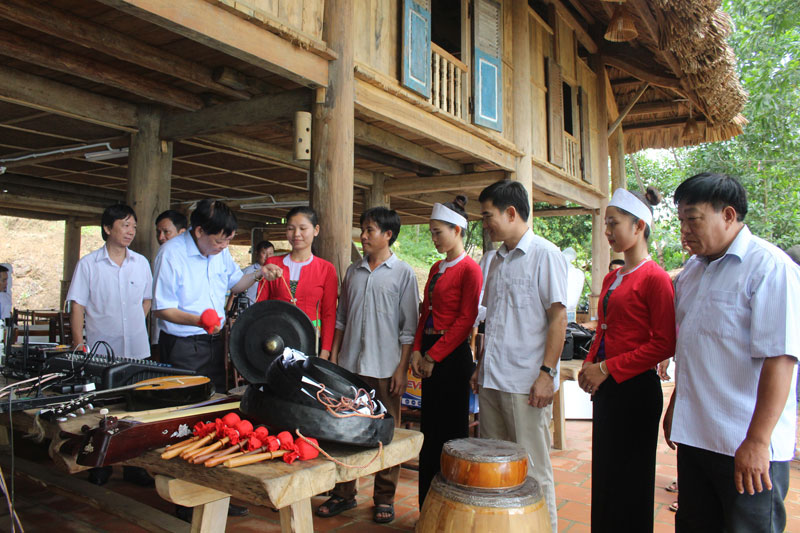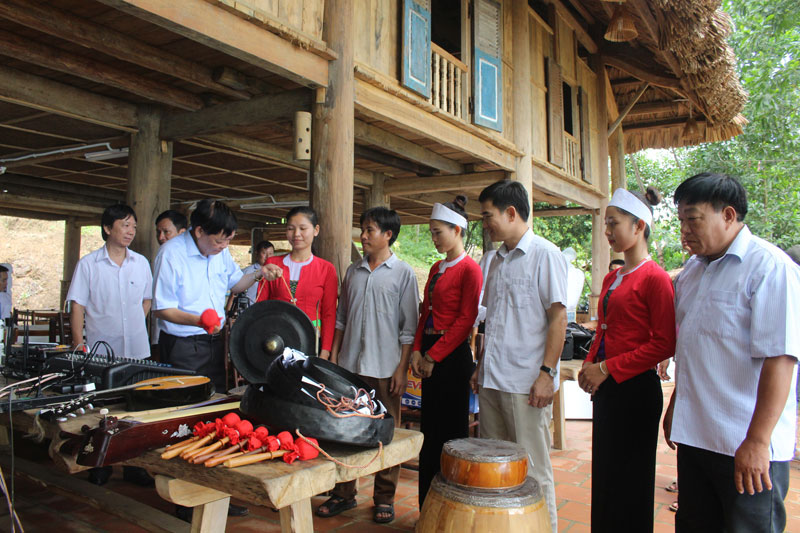



The Department of Culture, Sports and Tourism of Hoa Binh
presented traditional musical instruments, sound devices, loudspeakers to an
art team in Ngoi village to serve tourists.
Ngoi village has nearly 90
households with more than 300 people. Most of the locals maintain their
traditional ancient stilt houses. As an ancient Muong village, Ngoi village was
previously called Bua Dam, which means an even place on a high mountain, where
has various big trees or fresh shade.
Stilt houses were built on
even land lots scattered in the village, peacefully lying under high trees. The
houses face the reservoir in the front side and turn their backs to maize
fields or forests. Therefore, the weather is comfortable in all four seasons.
The village has a number of wonderful waterfalls and caves, including some
famous locations like Ngoi Hoa and Quai Am caves and newly-discovered Bua Dam
cave. Especially, the village is where local people unearthed a Lung Cu bronze
drum in 1993. The village is called "Ha Long Bay on mountain” and is a major
part of the Hoa Binh lake national tourism site development plan.
With the pristine natural beauty
and unique cultural characteristics of the Muong ethnic community, Ngoi village
has become a popular destination, attracting many tourists. When travelling to
the village, visitors can mix with nature, experience local people’s daily
activities and explore cultural life of Muong people with the sound of gongs,
singing voices, Mo Muong songs and market-days in rural areas. Besides, Ngoi
village has become a highlight in the travel route from several locations near
Hoa Binh lake to Thac Bo cave and Ba Khan lake or farther destinations like
In addition to tourism
activities such as cave exploring and homestay services, Ngoi village was also assisted
to purchase high-speed boats, inflatable water-bikes and kayaks for services in
the lake. Recently, an inflatable water park was inaugurated with more than 30
games using floats and underwater sports like water motorcycle, inflatable
boat, fishing on canoe, along with floating swimming pools as well as
traditional sports like boat racing and eating at floating restaurants. The
water park has brought a special feature for community-based tourism in Ngoi
village with various types of modern products, but still maintained and
enhanced cultural identity for sustainable tourism development as an attractive destination for
domestic and international visitors./.